Discovering ants in your attic can be an unwelcome surprise, and dealing with an infestation requires a strategic and comprehensive approach. With their impressive organizational skills, ants can quickly establish colonies and become a nuisance in your home.
Let’s explore why ants might be drawn to your attic, their potential risks, and practical strategies to effectively eliminate them.
Why Are Ants Invading Your Attic?
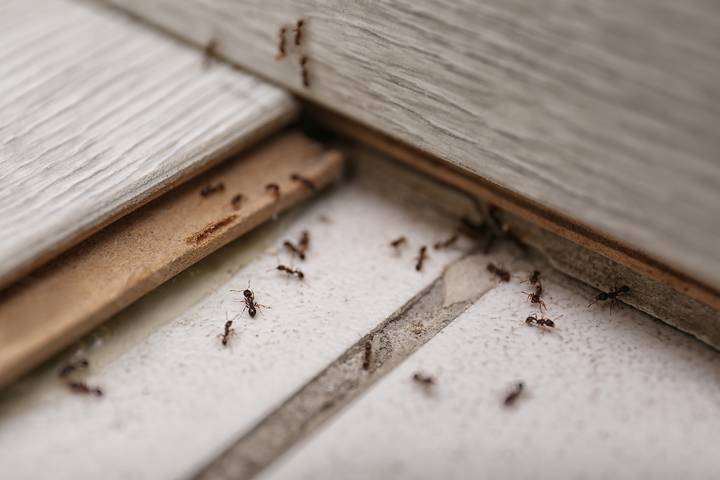
Here are the reasons behind ants invading your attic:
Seeking Shelter and Nesting Sites
Ants are resourceful creatures that constantly seek suitable locations for nesting. Attics, with their dark and secluded spaces, provide an ideal environment for ants to establish colonies. They often enter through gaps, cracks, or openings in the structure of your home.
Food Sources
Ants are attracted to food sources, and if there are crumbs, spills, or improperly stored food in your attic, it becomes an enticing destination for foraging ants. They can quickly locate and exploit even the smallest food remnants.
Moisture and Water Sources
Some ant species are drawn to moisture-rich environments. Leaky roofs, plumbing issues, or poor ventilation in the attic can create a humid environment that attracts ants. Addressing moisture problems is essential in preventing ant infestations.
Identifying the Types of Ants in Your Attic
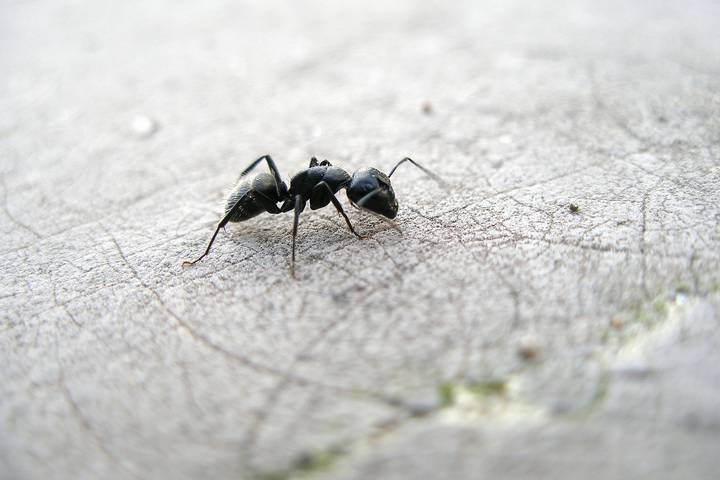
Identify various types of ants in your attic with ease. Gain insights on their characteristics and effective pest control methods to handle infestations.
Carpenter Ants
Carpenter ants are notorious for nesting in wood, and attics provide an ideal setting for their activities. While they do not consume wood like termites, carpenter ants excavate galleries within wooden structures, potentially causing structural damage over time.
Odorous House Ants
These ants are attracted to sugary substances and can quickly become a nuisance if food sources are in the attic. When crushed, they emit a distinct, unpleasant odour, hence the name “odorous house ants.”
Pharaoh Ants
Pharaoh ants are tiny, light-coloured ants known for their persistence and ability to establish large colonies. They are attracted to sweet and fatty foods, making them versatile foragers.
Risks of Ant Infestations in the Attic
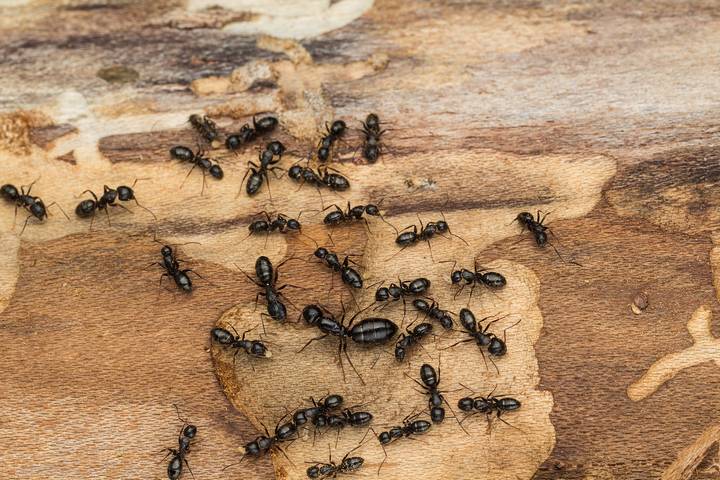
Here are some risks associated with ant infestations in the attic:
Structural Damage
Certain ant species, particularly carpenter ants, can cause structural damage by excavating nests in wood. Over time, this activity may compromise the integrity of wooden components in your attic.
Contamination of Food and Surfaces
Foraging ants can contaminate stored food in the attic, rendering it unsafe for consumption. They can also leave behind pheromone trails, guiding other ants to the food source and perpetuating the infestation.
Health Concerns
While ants are not known to transmit diseases directly, the presence of ants in living spaces poses hygiene concerns. Additionally, ant bites or stings can cause discomfort and allergic reactions in sensitive individuals.
How to Get Rid of Ants in the Attic
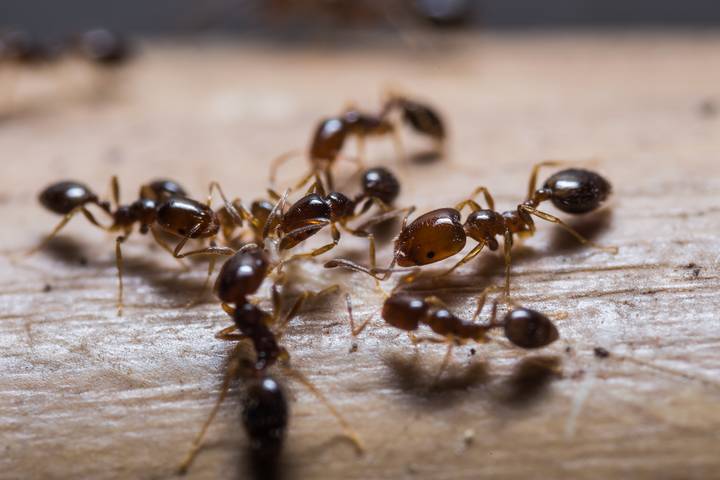
Here are the step-to-step strategies of how to get rid of ants in the attic:
Identify the Ant Species
Identify the ant species in your attic before implementing any control measures. Different ants may require different treatment approaches, so accurate identification is crucial.
Locate and Seal Entry Points
Conduct a thorough inspection of your attic to identify and seal potential entry points. Use caulk or sealant to close gaps, cracks, and openings in the walls, roof, or around windows and doors.
Eliminate Food Sources
Remove any food sources from the attic, including crumbs, spills, and improperly stored items. Clean surfaces thoroughly and use airtight containers for storing food to prevent future infestations.
Address Moisture Issues
Fix any leaks or moisture problems in the attic. Adequate ventilation is essential to reduce humidity levels, making the environment less attractive to moisture-loving ant species.
Use Natural Repellents
Consider using natural repellents to deter ants from entering your attic. Ingredients like cinnamon, vinegar, or essential oils such as peppermint or citrus can effectively create a barrier that ants are reluctant to cross.
Ant Baits and Traps
Place ant baits strategically in areas where ant activity is high. Ant baits typically contain slow-acting insecticides that ants carry back to the nest, eliminating the entire colony. Follow product instructions for placement and usage.
Professional Pest Control
If the infestation persists despite your efforts, or if you are dealing with a particularly challenging species like carpenter ants, seeking the assistance of a professional pest control service may be necessary. Professionals can assess the extent of the infestation and apply targeted treatments to eliminate the ants.
Preventing Future Ant Infestations
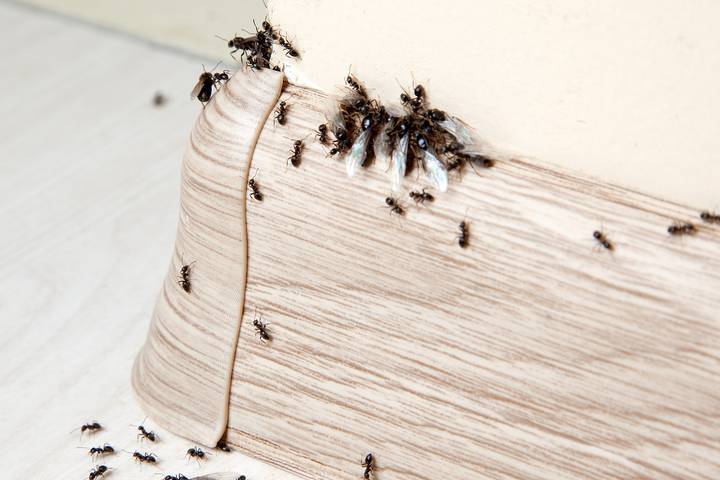
Let’s prevent future ant infestations:
Regular Maintenance
Stay proactive in maintaining your home by conducting regular inspections and addressing potential entry points. Regular maintenance reduces the likelihood of future ant infestations.
Seal Cracks and Openings
Periodically check for new cracks or openings and promptly seal them. Pay attention to areas around windows, doors, utility lines, and any contact points between the attic and the rest of the house.
Practice Proper Food Storage
Store food in airtight containers, and avoid leaving remnants in the attic. Regularly clean storage areas to eliminate any attractants for ants.





